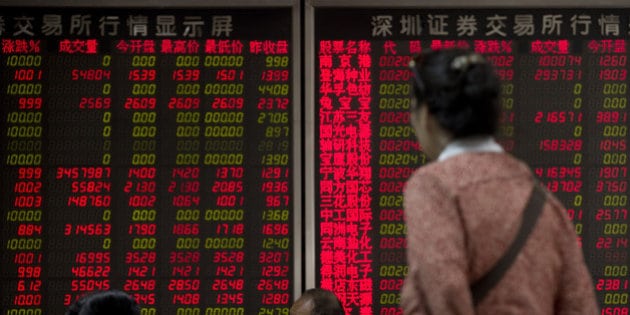Chinese investment in Australia fell 40% to $8.9 billion in 2017 as the Chinese government clamped down on ‘irrational’ outbound investment. The drop comes at a time when more Chinese investors feel unwelcome to invest in Australia.
Direct Chinese investment totalled $40.4 billion between 2014 and 2017, and peaked in 2016 with $14.9 billion in deals, according to a new public database developed by the Australian National University (ANU).
The 2017 decline in investment largely came from the 50% drop in the value of transactions by Chinese state-owned enterprises and their subsidiaries. Although these investors participated in less than 20% of transactions between 2014 and 2017, their allocations were large, amounting to $19.2 billion during the period.
Figure 1: Total Chinese investment ($ billions), 2014–2017

Investment by private investors also dropped in 2017 at almost 36%. This could partly be a reaction to China’s crackdown down on deals meant to transfer capital out of the country.
The Chinese government has set new rules that close the loopholes businesses used to move capital to foreign markets. Chinese companies must now report all their foreign investment deals and get approval from the government for transactions involving sensitive industries such as media and telecommunications.
Increased Apprehension
Some Chinese investors, particularly state-owned enterprises, have also grown apprehensive about investing in Australia, according to a recent report by KPMG and the University of Sydney. This was due to diplomatic tensions and a sense of feeling unwelcome. Only 35% of Chinese companies surveyed for the report in April 2018 felt welcome to invest in Australia, down from 52% in 2014.
Australia’s relationship with China was strained as the Australian Government took a tougher stance on foreign investment in critical infrastructure assets.
About 70% of the Chinese investors surveyed for the report said that this political issue had made Chinese companies more cautious about investing in Australia. More than two-thirds saw the Australian Government as less supportive than before.
Money pours into mining, real estate
Of the sectors that Chinese companies are investing in, mining attracted the largest share between 2014 and 2017 with nearly 25%, data from the ANU database shows. Real estate came next with more than 21%, but the sector saw a drop in its 2017 share amid a slowdown in Australia’s property market.
Figure 2: Chinese investment in Australia by sector (% of annual total), 2014–2017

Note: ANZSIC stands for Australian and New Zealand Standard Industrial Classification.
While Chinese money continues to flow into mining and real estate, it is also finding its way into the services sectors, particularly healthcare. The value of Chinese investment in healthcare surged more than 300% in 2016 and more than 200% in 2017.
The transport, postal and warehousing sector also recorded a jump in investment in 2016, accounting for the largest share that year.
According to Shiro Armstrong, a researcher who worked on the ANU database project, Chinese investment in Australia is becoming more nuanced and has started to diversify. “So, whereas we used to dig up a lot of rocks and ship them to China, that will still be a big part of our economic relationship; but their investment is largely coming into tourism [and] the services sector,” he said in a recent interview.
NSW Draws The Most Money
New South Wales continued to attract the most investment by location, followed by Victoria. The two states collectively received 78% and 68% of investment in transport and real estate respectively between 2014 and 2017.
Recipients of investment are overwhelmingly located in urban areas, but rural districts are expected to attract more Chinese money in the coming years.
Figure 3: Chinese investment received by state, 2014–2017





